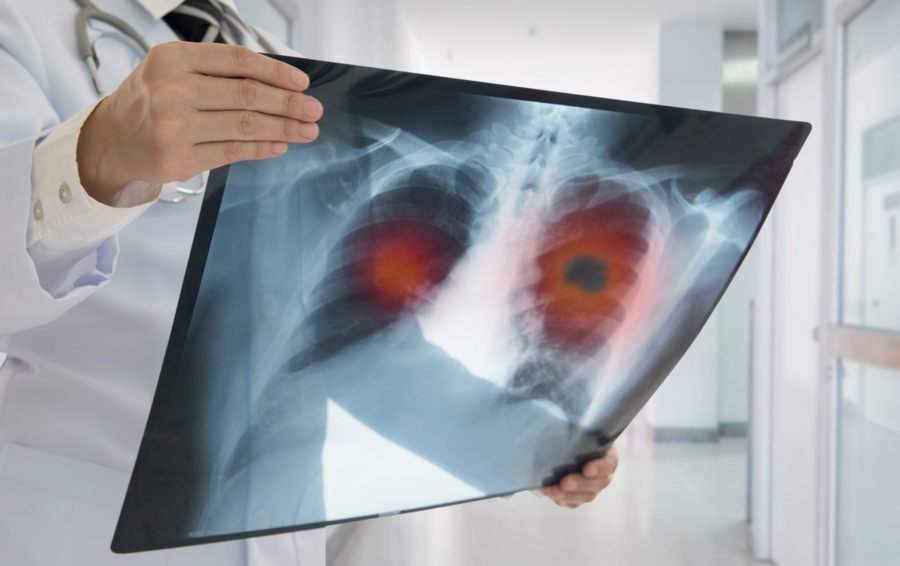Dietitian Blog, MNT Guidelines, Nutrition Support | Aug 24 2021
Feeding face down: ARDS and prone positioning

Respiratory failure is commonplace in the ICU, as is nutrition support. Sometimes, respiratory failure progresses to a very serious condition that requires extraordinary measures and unusual patient positioning to treat. So, how do we feed a patient who is lying face down? Let’s find out.
What is ARDS?
Acute respiratory distress syndrome (ARDS) was first described by Ashbaugh and colleagues in 1967.1 It is an acute, diffuse, inflammatory lung injury which causes increases in alveolar capillary permeability and lung weight and a loss of aerated lung tissue.2,3 Hypoxemia occurs due to the presence of fluid and inflammatory infiltrates in the alveolar. This leads to ventilation-perfusion disparity.2,4
ARDS is associated with a decrease in lung compliance and increases in venous admixture and physiological dead space.2,3 Histological changes that are seen on chest imaging are bilateral opacities.2,4 The most common morphological feature of this acute phase is diffuse alveolar damage.3
Timing is a factor for ARDS. The onset typically occurs within one week of the clinical insult or new/deteriorating signs of respiratory distress.3 Chest imaging demonstrates bilateral opacities that are not explained by effusions, lobe/lung collapse, or nodules.3 ARDS is present if edema is not due to fluid overload or cardiac failure.3
Follow our podcast Dietitians Only on Spotify and Apple Podcasts.
Treating ARDS
ARDS is managed by treating the underlying cause of respiratory distress, through lung-protective mechanical ventilation strategies and ICU support. This includes nutrition delivery and infection prevention.2,4 One treatment option for patients diagnosed with severe ARDS is placing them in a prone position.5
Prone positioning (lying the patient so that their chest is down and their back is up) was first reported by Douglas and colleagues in 1977.5 It is used to improve lung volume, increase ventilation, and redistribute pleural pressure. The result is improved gas exchange and oxygenation.6
The duration of prone position has ranged from 12 to 20 hours during the course of a day.6 Complications such as tube malfunction, soft tissue injuries, and increased intracranial pressure can occur. However, prone positioning should continue until adequate oxygenation can be sustained on standard ventilator settings, there are no improvements in respiratory failure observed, or the patient becomes hemodynamically unstable.6

Nutrition support in ARDS
During critical illness, it is important to provide early nutrition intervention, generally within 24 to 48 hours of onset.7-8 Early enteral nutrition has been shown to provide health benefits such as decreasing incidence of infection.7
The Society of Critical Care Medicine (SCCM)/American Society for Parenteral and Enteral Nutrition (ASPEN) guidelines for the critically ill patient recommend that either trickle or full-volume enteral feeds be initiated.8 Among patients with ARDS, the use of a fluid-restricted formula may be considered. There is limited evidence to suggest that a high-fat, low-carbohydrate formula is necessary.8 The primary goal for enteral nutrition in this patient population should be to avoid overfeeding.4
There are some questions regarding whether to provide enteral nutrition to patients who are in a prone position.7,9-12 This is due to risk of gastrointestinal (GI) intolerance characterized by aspiration, vomiting, or increased volume of gastric residuals. So what does the research tell us about enteral feeding during prone positioning?
There is limited evidence evaluating the safety and tolerability of enteral nutrition provided to patients in a prone position.9-12 Among the studies that have been published, results suggest that enteral nutrition provided to patients in a prone position did not increase the risk of GI intolerance compared to enteral nutrition provided to patients in a supine position.9, 10, 13
There are no significant differences in aspiration risk between patients who are fed via nasogastric tube versus post-pyloric tube during prone positioning.12 Monitoring for signs/symptoms of feeding intolerance is key.9 The use of strategies to reduce enteral feeding intolerance such as prokinetic agents may be warranted.9,11
Limitations to the published research include different study designs and small sample sizes.9-12 Studies were conducted at one site, which can limit generalizability. Likewise, different enteral feeding and prone protocols were used in different studies.9-12
Low volume tube feeding is possible while a patient is in a prone position. However, standardized enteral nutrition protocols are necessary to ensure safe feeding practices. Diligent monitoring for any potential GI issues is vital. Overall, more research is warranted to help healthcare providers establish enteral feeding protocols tailored to patients in prone position due to ARDS.
Dietitians On Demand is a nationwide staffing and recruiting company for registered dietitians, specializing in short-term, temporary and permanent-hire positions in acute care, long term care and food service positions. We’re dedicated to dietitians and helping them enhance their practice and excel in the workplace. Check out our job openings, request your coverage, or visit our store today!
References:
Ashbaugh DG, Bigelow DB, Petty TL, Levine BE. Acute respiratory distress in adults. 1967;2(7511):319-323.
Fan E, Brodie D, Slutsky AS. Acute respiratory distress syndrome advances in diagnosis and treatment.JAMA.2018;319(7):698-710.
Ranieri VM, Rubenfeld GD, Thompson BT, et al. The ARDS Definition Task Force. Acute respiratory distress syndrome. The Berlin definition. JAMA. 2012;307(23):2526-2533.
Turner KL, Moore FA, Martindale R. Nutrition support for the acute lung injury/adult respiratory distress syndrome patient: a review. Nutr Clin Pract. 2011;26(1):14-25.
Douglas WW, Rehder K, Beynen FM, Sessler AD, Marsh HM. Improved oxygenation in patients with acute respiratory failure: the prone position. Am Rev Resp Dis. 1977;115(4):559-566.
Athota KP, Millar D, Branson RD, Tsuei BJ. A practical approach to the use of prone therapy in acute respiratory distress syndrome. Expert Rev Respir Med. 2014;8(4):453-463.
Blaser AR, Starkopf J, Alhazzani W et al. Early enteral nutrition in critically ill patients: ESICM clinical practice guidelines. Intensive Care Med. 2017;43:380-398.
McClave SM, Taylor B, Martindale R, et al. Guidelines for the provision and assessment of nutrition support therapy in the adult critically ill patient: Society of Critical Care Medicine (SCCM) and American Society for Parenteral and Enteral Nutrition (ASPEN). JPEN J Parenter Enteral Nutr. 2016;40(2):159-211.
Linn DD, Beckett RD, Foellinger K. Administration of enteral nutrition to adult patients in the prone position. Intensive and Crit Care Nurs. 2015;31(1):38-43.
Saez de la Fuente I, Saez de la Fuente J, Estelles MDQ et al. Enteral nutrition in patients receiving mechanical ventilation in a prone position. JPEN J Parenter Enteral Nutr.2016;40(2):250-255.
Reignier J, Dimet J, Martin-Lefevre L, et al.Before-after study of a standardized ICU protocol for early enteral feeding in patients turned in the prone position. Clin Nutr.2010;29(2):210-216.
Sams VG, Lawson CM, Humphrey CL et al. Effects of rotational therapy on aspiration risk of enteral feeds. Nutr Clin Pract. 2012;27(6):808-811.
Ellis C, Brown M, Del Rosario K, et al. A review of the tolerance and adequacy of enteral nutrition administered in the prone position in critically ill patients receiving mechanical ventilation. Curr Dev Nutr.2021;5(2):216.
Who we are
Dietitians On Demand is the nationwide leader in providing dietitians with jobs they love. If flexibility, competitive pay, a full benefits package, free CPEUs each month and a team dedicated to dietitians sound good to you, apply to our positions today.




